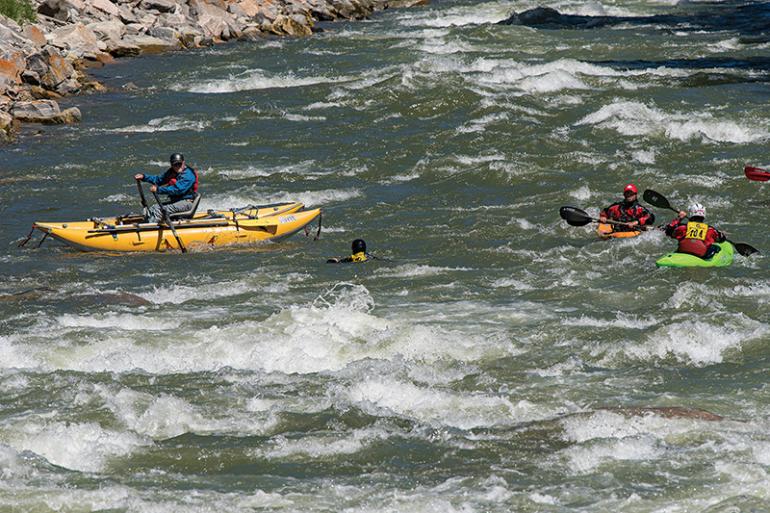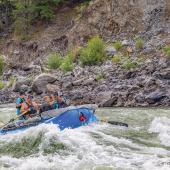Better Safe Than Soggy
Tips & tricks for whitewater safety.
"Rivers flow not past, but through us; tingling, vibrating, exciting every cell and fiber in our bodies, making them sing and glide."—John MuirAs spring temperatures rise, snow melts and rivers roar. If you’re planning to float during runoff—with a raft, kayak, canoe, or paddleboard—it’s of utmost importance to remind yourself of a little thing we like to call river safety.
Take a swiftwater rescue course to get the best river-safety education possible.
Gearing Up
Always use properly functioning gear. Save the second-rate equipment for the mellow flows of summer.
Life vests (PFDs) are a vital tool for those who can’t swim, and for those who think they can swim in ice-cold Class III rapids.
Helmets protect that noggin of yours. Rapids are formed by boulders, and even in deep water, a floating log or cliff face could knock you out.
Stave off hypothermia with a wetsuit—or dry suit, if you can afford one. At the very least, bring a splash jacket or raincoat to keep yourself dry in the boat.
Water shoes provide traction and keep your feet warm, especially when your boat goes for a joy ride of its own, leaving you to swim for shore and trudge across slick, sharp rocks. A cheaper option is a set of neoprene booties and some Chacos.
A throw bag is essential safety equipment. Bring one and know how to use it (read: practice).
An extra paddle will save you from being stuck up the proverbial creek. So will extra warm clothing, stashed safely in a dry bag, should you take an unexpected swim miles from the take-out.
Dos & Don’ts
Don’t test your limits during high water.
Do be cautious. Take risks in the summertime.
Don’t just show up and wing it.
Do check streamflows and scout unfamiliar stretches.
Don’t paddle solo.
Do bring a friend along—preferably an experienced one.
Don’t get complacent on the water.
Do remain vigilant, keeping an eye out for hidden hazards and changing conditions.
Don’t think that you can learn everything on your own.
Do take a swiftwater rescue course to get the best river-safety education possible.
Don’t bring your dog on anything over Class II.
Do put a life jacket on him, if you must bring him along.
Peril Prevention
Most drownings occur in or near one of these hazards. Give them a wide berth.
Strainers are fallen trees, brush, or driftwood, built up against the bank, and against or under which you can get stuck.
Sweepers are sharp bends in the river, often involving a strainer or other obstacle, that can suck you in and pull you under. Back-ferry to slow down and drift back into the main current.
Boulders can hold you in place, pinned against them by the force of the water.
Bridge pylons are like boulders, but can be more dangerous due to their size and shape.
Hydraulics are swirling holes behind boulders, next to cliffs, below spillways, and amid big rapids that can suck you under.
Stayin’ Alive
At some point you’re going to swim—ejected from your watercraft, bouncing helplessly through the rapids. Keep your body flat in the water, so your feet don’t get trapped in the rocks. Point your feet downstream and your head upstream—imagine you’re in a waterslide. Back-stroke for shore, avoiding hazards and aiming for an eddy.













